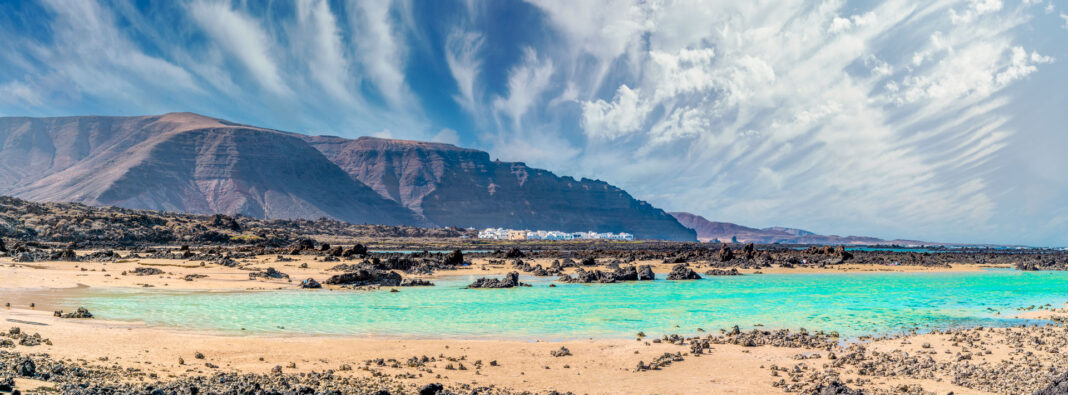Caletón Blanco is a hidden treasure on the road heading north. This sheltered cove with bright white sand is nestled between the rugged red, black and brown lava rocks and wild beach plants.
The drive along the LZ1 from Jameos del Agua to Órzola, the northernmost village in Lanzarote, is a drive through nature as it pierces the ancient lava fields bestowed by the Mount Corona volcano. As you wind your way along the coast, you’re surrounded by rugged badlands and unique varieties of plants that can only be found on the island. Suddenly, white sands start to appear amid the rocky landscape. There are several small beach areas with roadside parking, but they are wild and have no services. The first two you come across are somewhat dangerous for swimming. When the sea is calm, they’re perfect for a paddle and photo opportunities.
Blink and you’ll miss the path down towards the cove which is accessed approximately 1.4 kilometres along the LZ-1 road, next to a large rock. A small dirt track leads to a larger car park and right in front of it, you’ll see the natural pools with soft white sand and crystal-clear water. The pools are tidal, reaching no more than shoulder height at high tide. As the water is protected by a rocky reef, they are calm, shallow pools, ideal for children. If it weren’t for the fact that the water comes directly from the Atlantic Ocean and can be cool, it would look like a postcard from the Caribbean. On the beach itself, you’ll find a number of semicircular rocky shelters which are perfect for shielding you from the wind and lending privacy if you want to enjoy a bit of nudist sunbathing.
If you venture into Órzola itself, you’ll find a spectacular wild beach at the foot of the Famara Cliffs. It’s wonderful to visit, but strong currents and fierce waves make it dangerous for swimming. It’s popular among experienced surfers because of its challenging conditions.



